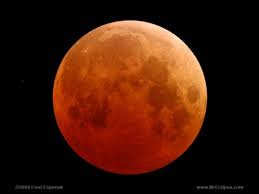
Photo from earthsky.org
Join the Science Museum of Virginia and the Richmond Astronomical Society on Sunday, September 27th, 8pm-midnight, for a special viewing of a Supermoon lunar eclipse. This unique pairing of a Supermoon and total lunar eclipse will not occur again until 2033! Astronomers will assemble on the front lawn of the Museum to share their telescopes and knowledge as they watch the Moon turn red in the night sky.
What makes this eclipse special?
On September 27th, the Moon will also be at its closest point to Earth in its orbit, known as perigee. Less than 223,000 miles away from Earth, the Moon will look about 7% bigger than an average full Moon.
What happens during a total lunar eclipse?
During a total lunar eclipse the Sun, Earth and Moon form a straight line – with the Earth blocking any direct sunlight from reaching the Moon. This formation causes the Earth’s shadow to cover the entire Moon for a brief period of time.
What gives the Moon a red appearance?
As sunlight travels through Earth’s atmosphere, the light particles scatter. The colors in the light spectrum with longer wavelengths, i.e. red and orange, are able to pass through the atmosphere and are refracted to the surface of the Moon. The refracted sunlight gives the Moon its famous red-orange glow, which is popularly nicknamed as a ‘Blood Moon’.
When is the peak of the lunar eclipse?
The peak of the total lunar eclipse will occur at 10:47 pm.
The Supermoon Lunar Eclipse Viewing is a free event at the Science Museum of Virginia, weather permitting. For more information, please visit www.smv.org or call 804.864.1400.

 Birthdays
Birthdays